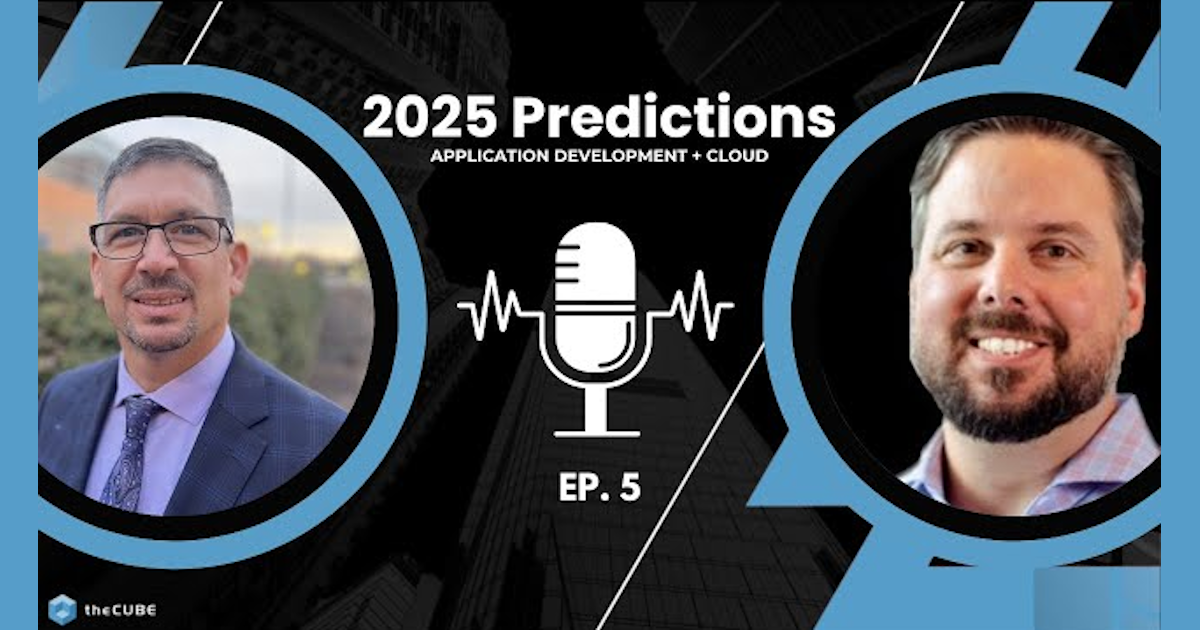As we step into 2025, cloud technologies and application development are evolving rapidly, reshaping how organizations innovate, scale and secure applications.
AI is enhancing, not replacing, development, while DevOps consolidation is streamlining workflows. Hybrid operating models are gaining traction, balancing cloud, edge and on-premises computing.
Security remains a priority, with AI-driven DevSecOps becoming standard. Meanwhile, low-code and no-code platforms are redefining the developer’s role. Organizations that adapt strategically will stay ahead, and developers who embrace these shifts will drive the future of innovation.
Five key trends highlight the opportunities and challenges ahead.
1. AI in development: More augmentation, less replacement
AI-powered development tools are becoming indispensable, handling routine tasks such as code generation and debugging. Yet, the vision of fully autonomous AI-driven coding remains unrealistic. Instead, AI will serve as an augmentation tool, helping developers modernize legacy applications while requiring human intervention for complex problem-solving.
2. Scaling DevOps through consolidation
Fragmented DevOps toolchains are giving way to unified platforms, with nearly half of enterprises expected to adopt them by the end of 2025. These integrated solutions will enhance collaboration, reduce tool sprawl and optimize software delivery lifecycles. However, adoption challenges persist, particularly around standardizing CI/CD best practices and bridging skill gaps.
3. The shift to hybrid operating models
With developers spending less than a quarter of their time coding, hybrid environments that blend on-premises, cloud and edge computing are becoming the new norm. These models prioritize efficiency by allowing AI to process data locally before moving workloads to cloud environments. Yet, interoperability remains a challenge, particularly for Kubernetes-based deployments.
4. The urgency of secure DevOps
Security threats are escalating, making DevSecOps a business imperative. By 2025, over 60% of enterprises will integrate automated security tools into their CI/CD pipelines. Organizations are moving beyond “shift-left” strategies to “shift-everywhere” approaches, embedding security measures across every phase of development and leveraging AI to detect vulnerabilities proactively.
5. The developer’s changing role in low-code/no-code environments
Low-code and no-code platforms are democratizing application development, enabling business users to create applications with minimal technical expertise. This evolution is freeing developers to focus on complex integrations, scalability and security. APIs are becoming the backbone of modern workflows, ensuring governance while enabling automation.
Final thoughts
The convergence of cloud, AI and application development is driving a fundamental shift in how software is built and maintained. Organizations that embrace these changes strategically will gain a competitive edge, while developers who adapt to evolving roles will continue to be at the forefront of innovation.
Here’s the complete conversation with theCUBE Research’s Paul Nashawaty (pictured, left) and Rob Strechay (right):
And you can read the full details here.
Image: News
Your vote of support is important to us and it helps us keep the content FREE.
One click below supports our mission to provide free, deep, and relevant content.
Join our community on YouTube
Join the community that includes more than 15,000 #CubeAlumni experts, including Amazon.com CEO Andy Jassy, Dell Technologies founder and CEO Michael Dell, Intel CEO Pat Gelsinger, and many more luminaries and experts.
THANK YOU









